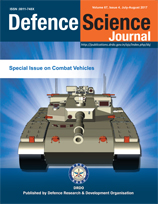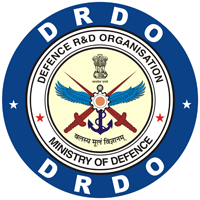Design and Optimisation of Cooling System for Tracked Vehicle Powerpack
DOI:
https://doi.org/10.14429/dsj.67.11538Keywords:
Tracked vehicle, Military vehicle, Cooling system, Radiator, Charged air cooler, Hydraulic oil cooler, Powerpack, Numerical analysis, Simulation, Digital prototypeAbstract
Military tracked vehicles are deployed in severe environmental and loading conditions during military operations. The space availability and high heat rejection sources makes the cooling system design a challenging task by offering little margin in design parameters. Prime aspects of the design methodology, i.e. packaging of cooling system aggregates in available space, optimising air flow, numerical simulation and also the evaluation of cooling system performance on a test bench in simulated vehicle conditions and during field trials are presented. During preliminary design stage virtual prototyping approach was adopted which helped to make critical decisions earlier in the development stage before physical prototyping. Further, sensitivity study of size of heat exchangers, layout of fan-heat exchangers and its effect on overall system resistance was studied. Data from field trials were gathered and analysed. A good correlation of thermal data from field trials in collaboration with CVRDE and data evaluated based on numerical simulations is established. This approach and close correlation between the theoretical and field data will be helpful in achieving all future developments of tracked vehicle powerpacks, first time right.
Downloads
Published
How to Cite
Issue
Section
License
 Where otherwise noted, the Articles on this site are licensed under Creative Commons License: CC Attribution-Noncommercial-No Derivative Works 2.5 India
Where otherwise noted, the Articles on this site are licensed under Creative Commons License: CC Attribution-Noncommercial-No Derivative Works 2.5 India


